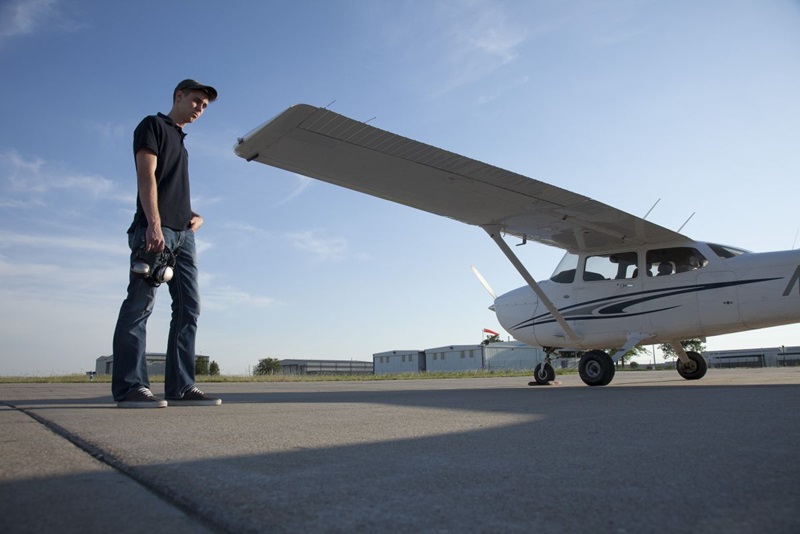Solo: Flight training’s first big milestone
No matter how much flying a pilot does over a lifetime in aviation, the first solo flight is a memory second to none. Whether a pilot soloes at the youngest age permitted by regulations, or later in life as the fulfilment of a long-nurtured dream, the memory of rising from the runway truly the pilot in command of your training aircraft, with the instructor’s seat vacant beside you—go ahead, check again, it’s unoccupied—will always bring a smile.
You are not the only person who feels that way about your first solo. Your flight instructor also sees it as a gratifying milestone on your way to becoming a certificated pilot. It’s the culmination of volumes of learning acquired over a short span of time that raises the curtain on the next phase of your training. This is a good time to reflect on how far you’ve come since those first few flight hours to accomplish something most people could never imagine.

If your solo flight is drawing near—and there are clues aplenty about that, some of them not at all subtle—there are questions that will be on your mind about the process, including how your flight instructor decides that it’s time for the big event. Here are some of the frequently asked questions and answers about soling.
What is the significance of soloing?
Seriously, soloing is a big deal as a tangible training milestone, and a confidence-builder for a student pilot who has earned the privilege. In the next phase of training you will begin to meet the solo flight requirements of your training project, using your knowledge to make command decisions on your own, without the immediate support (or crutch) of having a more experienced person riding along. Authorization to solo means you have satisfied specific regulatory requirements for knowledge and flight training, and that your instructor has certified in writing that you are competent to exercise this new privilege within stated limitations.
Where can I find the requirements for solo?
See Federal Aviation Regulation 61.87. It states the solo requirements for student pilots.
Is there a presolo written test?
Yes, it is described in the regulatory section noted above. Your instructor must administer this exam and go over it with you and review all incorrect answers before authorizing your solo flying.
How will I know when I’m ready to solo?
Your instructor will keep you informed of your progress toward solo, and when the time is near, you will intensively practice with your instructor, who will evaluate more and teach less as you approach peak readiness. Don’t be surprised if the instructor pronounces you ready to solo while you still feel some hesitancy. If you trust you instructor’s judgment, have faith in your own abilities. Note that a first solo needs to occur under just the right conditions, so if weather, or airport traffic doesn’t cooperate right away, be patient and continue tuning up.
How much wind is too much for a solo?
Your instructor will supervise your early solo flights that will be conducted on days with light winds and excellent visibility and will set safe limits for you to fly alone. These limitations will likely include ceiling and visibility standards and total wind and maximum crosswind components.
What’s some good basic advice for a solo?
Probably the most important item is to remember that if you do not like how a landing approach is developing, the answer is to go around. As the saying goes, landing is only an option—and be assured your instructor will be pleased with your safety-minded decision making.
How do I log solo fight time?
You log it as pilot in command (PIC). FAR 61.51(e)(4) says, “A student pilot may log pilot-in-command time when the student pilot (i) Is the sole occupant of the aircraft; (ii) Has a solo flight endorsement as required under [FAR] 61.87; and (iii) Is undergoing training for a pilot certificate or rating.” Be sure to log all your applicable solo time as PIC time.
What should I wear?
If that seems like an unusual question, read on. Comfortable clothing and footwear is recommended. But on your first solo, don’t wear a shirt you plan to wear again. If you are unfamiliar with the shirttail tradition undergone by many newly soloed student pilots, inquire about it before the big day to know why this advice matters.
Get more tips and advice from AOPA’s pilot-authors in Flight Training magazine.


